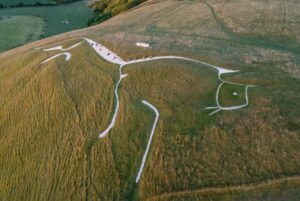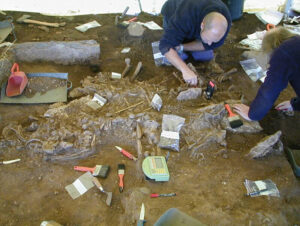Monkeys in Thailand’s forests are — unintentionally — making stone tools that look remarkably like those used by early humans. It might change our thinking about early human evolution.
Intentional tool production?
It was assumed that humans started doing this intentionally, that they had purposefully crafted the bits of stone into something useful. The study of these long-tailed macaques suggests otherwise.
Scientists have discovered that several primates make use of tools. The mischievous long-tailed macaques in Southeast Asia use stones to break into shellfish to get the meat. They carefully select long, narrow, heavy stones to crack open oyster shells. They also use stones to break into oil-rich nuts often from palm oil plantations.

Photo: Shutterstock
Camera traps showed the Thai monkeys in an abandoned palm oil plantation. They placed the pits of the palm fruits on a big flat stone that acted like an anvil. Then they smashed it open with a rock.
When they missed their mark, the two stones cracked against each other, and sometimes part of one of the rocks flaked off. This is where a prevailing theory of human evolution starts to unravel.
The flakes of rock were clearly not intentionally made by the monkeys, but they look almost identical to some of the tools used by ancient humans. “All the conoidal flakes we find in the archaeological record — deemed to be intentionally made — could be unintentional byproducts,” anthropologist Lydia Luncz said.
A step to true tool production
The macaques don’t use these stone flakes, but their habitats are littered with them. Previously, multiple stone flakes at an early-human archaeological site were viewed as a key identifier of tool-making.
“The ability to intentionally make sharp stone flakes is seen as a crucial point in the evolution of hominins…Our study shows that stone tool production is not unique to humans and our ancestors,” lead researcher Tomos Proffitt said.

Photo: Shutterstock
This new study suggests that early humans initially used stones and rocks in a similar way to the macaques, to crack things open. Eventually — and this is the difference between those early humans and monkeys — they realized that they could use the sharp flakes they had accidentally created for other purposes, like cutting meat. The stone flakes may have been a precursor to actual stone tool production.
Researchers on the project hoped this discovery would show that the study of living primates can help us look back at our own evolution. Instead, there has been pushback from others in the field.
Some researchers did not like that Luncz used the word “artifacts” to describe the flakes of stone created by the macaques. They believed the word implied intention and planning.
Luncz thinks the main reason for the controversy is that it makes us reconsider what it is to be human.
“People were not happy with monkeys being able to create these artifacts,” she said. “Somewhere in the records of macaque and early hominid tools, there must be a difference. But right now, [we] can’t find one.”






